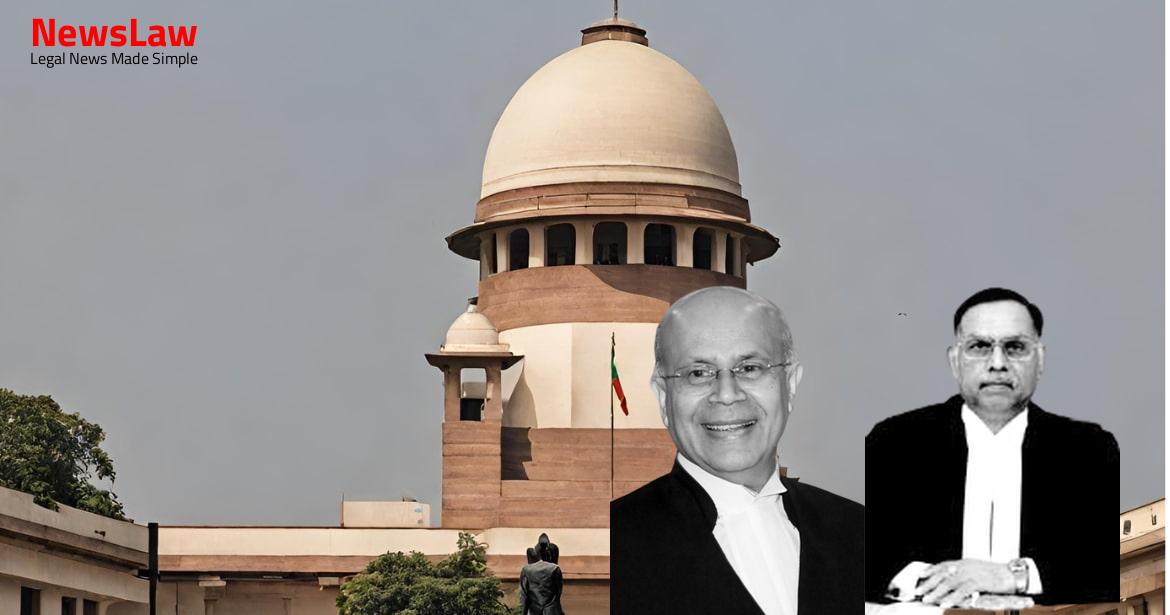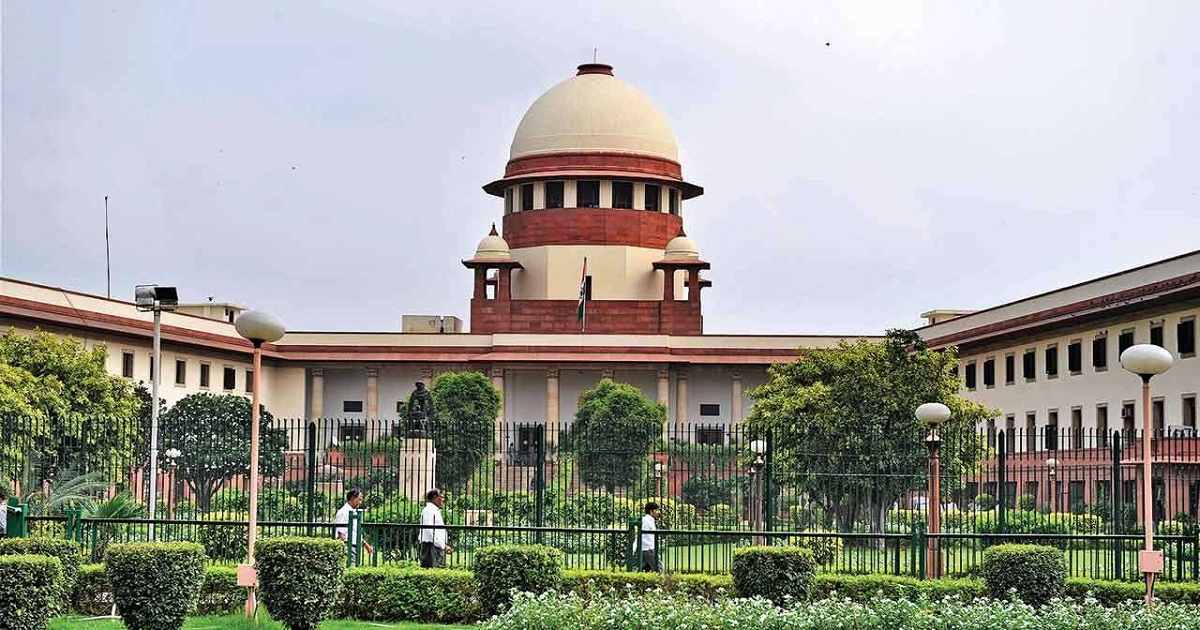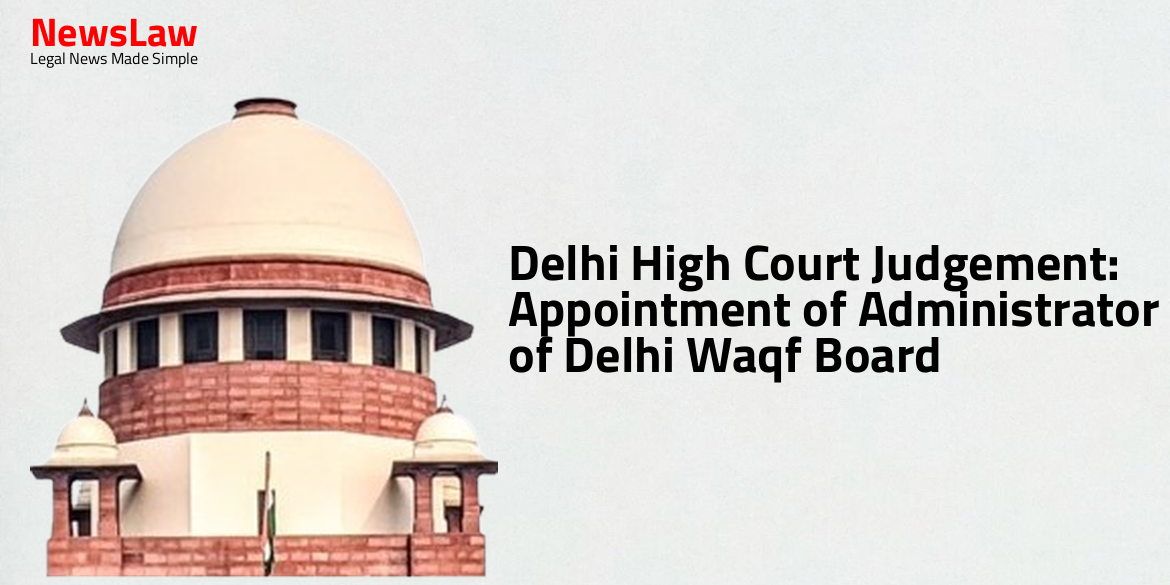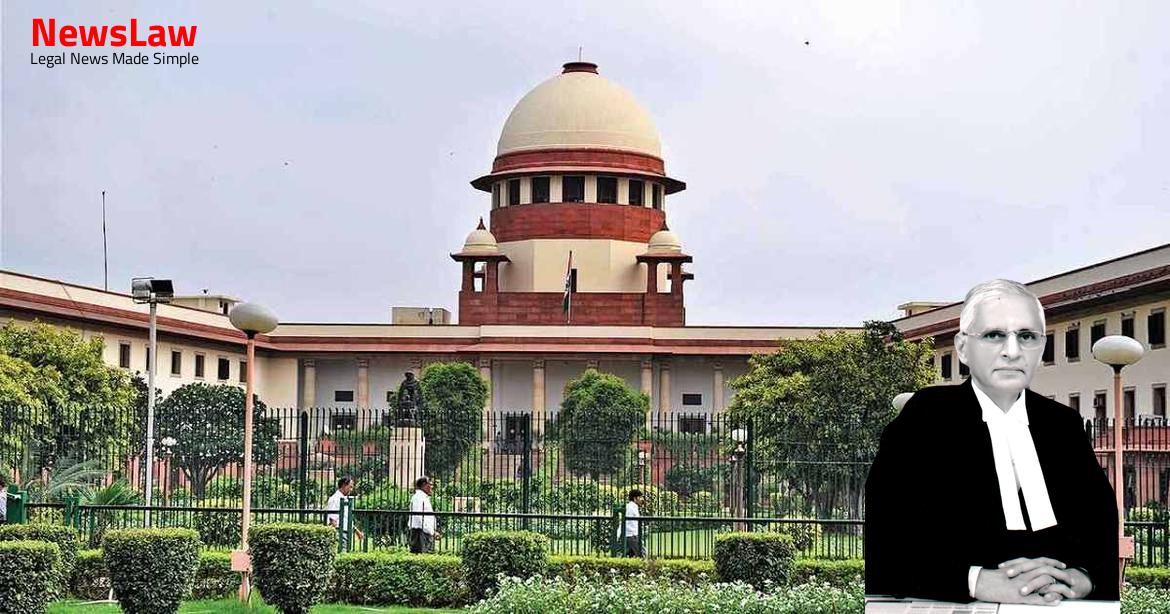In a landmark judgment by the Supreme Court of India, the long-standing property dispute between the Ingole brothers has finally been resolved. The legal heirs of Ramchandrarao Ingole had filed a suit for partition and possession of their share in the jointly purchased property. However, the Supreme Court’s verdict has restored the orders of the Trial Court and the First Appellate Court, dismissing the plaintiffs’ claim in the case. This decision marks a significant moment in the legal battle over the Ingole Brothers’ property.
Facts
- The plaintiffs, as legal heirs of Ramchandrarao Ingole, filed a suit for partition and possession of their half share in the property.
- The suit property was jointly purchased by the brothers in 1957. The property consisted of 7011 sq. ft. of land with a house.
- The Trial Court dismissed the suit as they had already partitioned the property among themselves in 1952.
- The first appeal by the plaintiffs was also dismissed.
- Trimbakrao Ingole exclusively constructed the house and remained in possession of it with his funds.
- Ramchandrarao Ingole never claimed a share in the property during Trimbakrao’s lifetime or for fifteen years after his death.
- The legal heirs of Ramchandrarao Ingole claimed partition based only on the sale deed after his passing.
- The construction of the house was acknowledged to be solely done by Trimbakrao Ingole.
- Trimbakrao Ingole passed away in 1980, and Ramchandrarao Ingole passed away in 1995.
- The High Court allowed the plaintiffs’ Second Appeal, overturning the decisions of the lower courts.
- Two courts concluded that Ramchandrarao Ingole was never a beneficiary or in joint ownership of the suit property.
- Concurrent findings were reached by both courts that the plaintiffs did not prove Ramchandrarao Ingole had contributed to the purchase of the property.
- There was no evidence presented that Ramchandrarao Ingole had been a beneficiary of the purchase through residence or possession.
Also Read: Dispensation with Personal Appearance in Criminal Case: Landmark Judgement by Supreme Court of India
Arguments
- Section 92 of the Indian Evidence Act not applicable as it pertains to bilateral documents.
- Plaintiffs engaged in speculative litigation for the vacant area of the property.
- Cordial relations existed between the brothers when purchasing the property.
- Ownership of Ramchandrarao Ingole by operation of law established.
- Suit filed after Ramchandrarao Ingole’s death is permissible.
- Possession not necessary for asserting rights as per legal precedents.
- Vendee’s signature on the sale deed not mandatory.
- Mention of name on stamp papers does not establish exclusive ownership.
- High Court’s interference in Second Appeal questioned by the appellants.
- Concurrent findings of two courts support non-beneficiary status of Ramchandrarao Ingole.
- The oral evidence provided by both parties was insufficient to exclude the rights of the plaintiffs.
- The appellants failed to present any evidence under the second and third proviso to Section 92 to challenge the presumption in favor of the plaintiffs under Section 45 of the Act.
- The original sale deed may have been produced by the defendants, but this does not change the insufficiency of evidence presented by the appellants.
Also Read: The Jodha Ram vs. Kaushaliya Dispute: Supreme Court Judgement Summary
Analysis
- The Trial Court noticed a gap of 36 days between the preparation and registration of the sale deed as a circumstance to accept the defendants’ contention.
- Ramchandrarao Ingole did not prefer any claim or contribution towards the property from 1957 until his death in 1995.
- The High Court’s conclusion of improper evidence appreciation amounting to perversity was deemed unsustainable.
- No rejoinder or replication was filed by the plaintiffs to the additional written statement.
- Stamp papers were purchased and the sale deed was drafted in the name of both brothers before registration.
- The evidence mainly consisted of conflicting statements by the legal heirs of the two brothers.
- The plaintiffs never resided on or enjoyed the purchased property, nor did they incur any expenses related to it.
- The plaintiffs’ claim for presumption under Section 45 of the Act was negated by the First Appellate Court due to factual findings.
- The Trial Court and First Appellate Court’s findings in favor of the defendants were based on probabilities.
- The defendants failed to provide satisfactory evidence of full consideration payment by Trimbakrao Ingole but this did not absolve the plaintiffs of proving their claim.
- No challenge was made regarding the mutation being done solely in Trimbakrao Ingole’s name.
- The High Court was criticized for interfering with the lower courts’ factual findings based on evidence.
- The High Court’s interference should have been limited to substantial questions of law under Section 100 of the Civil Procedure Code.
- The High Court erred in suggesting exclusive ownership of the property without sufficient evidence.
- It was admitted by PW-1 that the house construction was solely done by Trimbakrao Ingole.
- The construction of the house was not shown to be funded by joint family funds, indicating Trimbakrao Ingole paid the full consideration.
- The High Court correctly held that the weakness of the defense cannot be used to strengthen the plaintiff’s case when the defendants are disputing the claims.
- Section 45 of the Transfer of Property Act deals with joint transfers for consideration, outlining the entitlement to interests in the property based on the common or separate funds used for payment.
- The Supreme Court in various cases has emphasized that sufficiency or adequacy of evidence to support a finding of fact is within the jurisdiction of the court of facts and cannot be a ground for second appeal.
- There have been instances where the High Court has misconstrued Section 100 of the Civil Procedure Code and interfered with pure findings of facts, leading to unpredictability in judicial decisions.
- The judicial process must adhere to clear and express provisions of the law, ensuring that justice is administered based on legal principles rather than subjective interpretations.
- High Court’s interference with concurrent findings of facts by two lower courts is considered unsustainable
- Exercise of powers under Section 100 of the Civil Procedure Code was not justified
- Order of the High Court in this regard is held to be incorrect
Also Read: Contractor vs. FCI: Determination of Profit and Wage Dispute
Decision
- Orders dated 06.03.1998 and 13.06.2002 of the Trial Court and the First Appellate Court are restored.
- The present appeal is allowed.
- The order of the High Court is consequently set aside.
- The suit of the plaintiffs is dismissed.
- Consequently, the impugned judgment is set aside.
- This appeal is allowed with costs.
Case Title: NARESH Vs. HEMANT
Case Number: C.A. No.-008859-008859 / 2019



